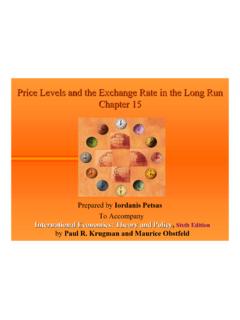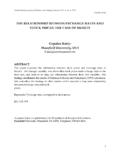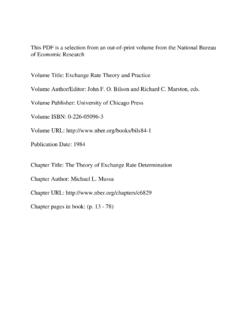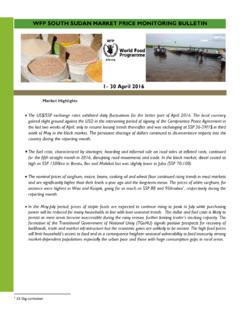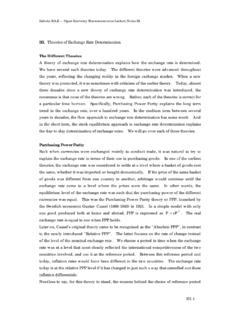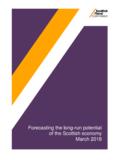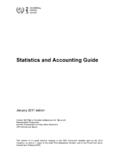Transcription of The Purchasing Power Parity Puzzle Kenneth …
1 The Purchasing Power Parity PuzzleKenneth RogoffJournal of Economic Literature, Vol. 34, No. 2. (Jun., 1996), pp. URL: of Economic Literatureis currently published by American Economic use of the JSTOR archive indicates your acceptance of JSTOR's Terms and Conditions of Use, available JSTOR's Terms and Conditions of Use provides, in part, that unless you have obtainedprior permission, you may not download an entire issue of a journal or multiple copies of articles, and you may use content inthe JSTOR archive only for your personal, non-commercial contact the publisher regarding any further use of this work. Publisher contact information may be obtained copy of any part of a JSTOR transmission must contain the same copyright notice that appears on the screen or printedpage of such JSTOR Archive is a trusted digital repository providing for long-term preservation and access to leading academicjournals and scholarly literature from around the world.
2 The Archive is supported by libraries, scholarly societies, publishers,and foundations. It is an initiative of JSTOR, a not-for-profit organization with a mission to help the scholarly community takeadvantage of advances in technology. For more information regarding JSTOR, please contact Sep 10 21:39:47 2007 Journal of Economic Literature Vol. XXXIV (June 1996), pp. 647-668 The Purchasing Power Parity Puzzle KENNETHROGOFF Princeton University I am grateful to Rudiger Dornbusch, Hali Edison, ]ohn Rogers, Susanne Trimbath, and to three anonymous referees for constructive suggestions on an earlier draft, and to Brian Doyle and Giovanni Olivei for excellent research assistance. The National Science Foundation and the Bradley Foundation provided research support.
3 I. Zntroduction FIRST ARTICULATED by scholars of the Salamanca school in sixteenth cen-tury Spain,l Purchasing Power Parity (PPP) is the disarmingly simple empiri- cal proposition that, once converted to a common currency, national price levels should be equal. The basic idea is that if goods market arbitrage enforces broad Parity in prices across a sufficient range of individual goods (the law of one price), then there should also be a high correlation in aggregate price levels. While few empirically literate econo-mists take PPP seriously as a short-term proposition, most instinctively believe in some variant of Purchasing Power Parity as an anchor for long-run real exchange rates . Warm, fuzzy feelings about PPP are not, of course, a substitute for hard evidence.
4 There is today an enormous and ever- growing empirical literature on PPP, one that has arrived at a surprising degree of consensus on a couple of basic facts. First, at long last, a number of recent studies have weighed in with fairly per- suasive evidence that real exchange rates See Lawrence H. Officer (1982, ch. 3) for an extensive discussion of the origins of PPP theory; see also Dornbusch (1987). (nominal exchange rates adjusted for dif- ferences in national price levels) tend to- ward Purchasing Power Parity in the very long run. Consensus estimates suggest, however, that the speed of convergence to PPP is extremely slow; deviations ap- pear to damp out at a rate of roughly 15 percent per year. Second, short-run de- viations from PPP are large and volatile.
5 Indeed, the one-month conditional vola- tility of real exchange rates (the volatility of deviations from PPP) is of the same order of magnitude as the conditional volatility of nominal exchange rates . Price differential volatility is surprisingly large even when one confines attention to relatively homogenous classes of highly traded goods. The Purchasing Power Parity Puzzle then is this: How can one reconcile the enormous short-term volatility of real ex- change rates with the extremely slow rate at which shocks appear to damp out? Most explanations of short-term ex- change rate volatility point to financial factors such as changes in portfolio pref- erences, short-term asset price bubbles, and monetary shocks (see, for example, Maurice Obstfeld and Rogoff forthcom- ing).
6 Such shocks can have substantial ef- fects on the real economy in the pres- ence of sticky nominal wages and prices. 648 Journal of Economic Literature, Vol. XXXIV (June 1996) Consensus estimates for the rate at which PPP deviations damp, however, suggest a half-life of three to five years, seemingly far too long to be explained by nominal rigidities. It is not difficult to rationalize slow adjustment if real shocks-shocks to tastes and technol-ogy-are predominant. But existing models based on real shocks cannot ac- count for short-term exchange rate vola- tility. Section 2 gives a brief account of the Purchasing Power Parity doctrine's em-pirical origins. In Section 3, I consider some of the various ways in which PPP can be construed; the alternative ap-proaches to defining PPP bring out many of the main issues and problems underly- ing testing and implementation.
7 Section 4 looks at the startling empirical failure of the law of one price, a central building block of PPP that posits that similar goods should sell for similar prices across countries. Most economists recognize that there are frequent violations of the law of one price, but those not familiar with recent research will probably be stunned by the pervasiveness of the dis- parities. Indeed, some recent studies have shown that price differentials across countries for very similar consumer goods are typically more volatile than price differentials within a country for very dissimilar goods. Section 5 looks at a spate of recent studies that have finally relieved re-searchers of the embarrassment of not being able to reject the random walk model for real exchange rates .
8 Section 6 looks at some modifications to purchas- ing Power Parity that are often used in practice and asks under what circum-stances they provide a better model of the long-run real exchange rate. This section includes evidence on Bela Balassa's (1964) and Paul Samuelson's (1964) hypothesis that prices for non-traded goods tend to be high in rich countries relative to poor ones. I also consider differentials in government spending and current account imbal-ances as variables that affect medium- to long-term deviations from PPP. Section 7 discusses some recent vector autore- gression work that aims to decompose the shocks underlying real exchange rate changes. In the final, concluding, section, I ar- gue that it is difficult to explain the vola- tility and persistence of PPP deviations without recognizing that international goods markets are not yet nearly as highly integrated as domestic goods mar- kets.
9 2. Gustav Cassel and the Birth of PPP as an Empirical Tool The modern origins of Purchasing Power Parity trace to the debate on how to restore the world financial system af- ter its collapse during World War I. Prior to war, most countries adhered to the gold standard, in which their curren- cies were convertible to gold at fixed parities. The exchange rate between two currencies then simply reflected their relative gold values. After the outbreak of World War I, however, maintaining the gold standard became impossible as speculators became justifiably concerned that countries would devalue their cur-rencies in an effort to gain seignorage revenues; the gold standard was quickly abandoned. When the war ended, coun- tries faced the very real problem of de- ciding how to reset exchange rates with minimal disruption to prices and govern- ment finances.
10 Simply returning to pre- war exchange rates made no sense be- cause the various belligerents had such vastly differing inflation experiences dur- ing the war. In a series of influential articles, the Swedish economist Gustav Cassel (1921, 1922) promoted the use of PPP as a 649 Rogofl The Purchasing Power Parity Puzzle means for setting relative gold parities. Basically, he proposed calculating cumu- lative CPI inflation rates from the begin- ning of 1914 and using these inflation differentials to calculate the exchange rate changes needed to maintain PPP. Though Purchasing Power Parity had been discussed previously by classical economists such as John Stuart Mill, Vis- count Goschen, Alfred Marshall, and Ludwig von Mises, Cassel was really the first to treat PPP as a practical empirical theory.
